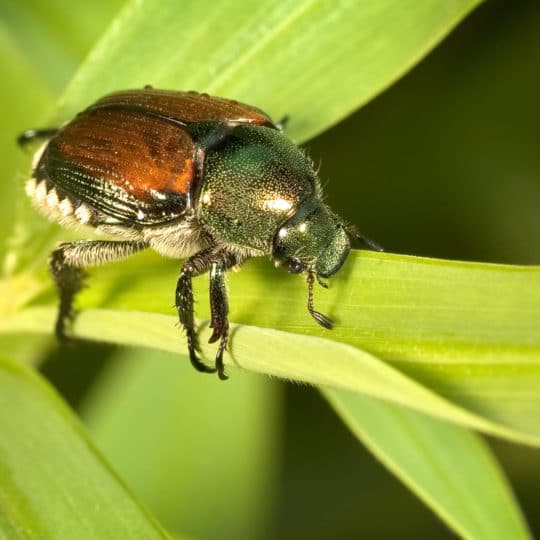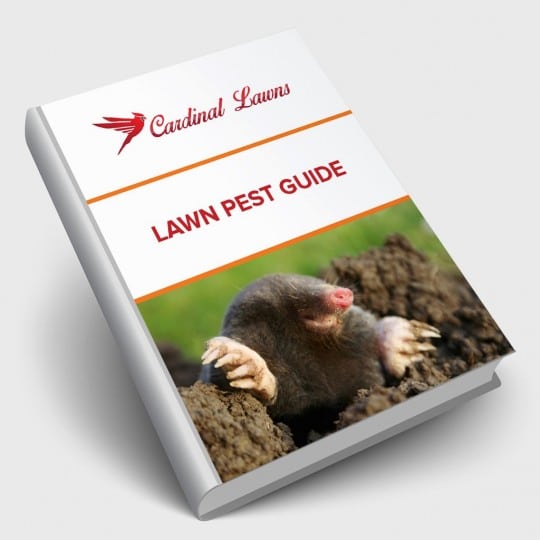Japanese Beetle Season
(It’s all year long)
Posted
September 2, 2021

Now that summer is winding down, you may think Japanese beetle season is over. Well, think again. While you may not see as many attacking your garden, you can be sure they’re still alive and well, gearing up for winter and the next feeding season. Learn how to stop them before the damage starts.
Japanese Beetle Damage
If your roses, fruiting plants, and other greens are looking rough this year, you may have Japanese beetles to blame. They’re not super picky about the types of plants they chew, leaving leaves looking like skeletons of their former lush selves. The summer season is rough since this is the time adult beetles are more recognizable and do a lot of damage. Even though their activity is waning, their lifecycle is still ongoing, and now it’s time to tackle the larvae and grubs to prevent a repeat rapture next year.
Beetle Control
While there are many ways to get rid of beetles, the best methods are preventative ones. And the time to treat for next year starts soon. Japanese beetles start as grass root chewing grubs. So even before they grow into the green and coppery beetle we all know and fear, they’re already doing damage to property from underground. If you notice brown patches on your lawn, it may be due to hungry grubs. There are ways to test and treat grubs, and this process starts in the early fall.
Grub treatment is a delicate situation since you don’t want to use chemicals that will kill all the good things in your garden. Here are some alternative options:
- Aerate. In the early weeks of fall, grubs feed on grass roots close to the surface of the soil. When you aerate, you puncture holes through the top layer of soil that allows sun, water, and nutrients to filter through. This also is an easy way to skewer the grubs. Start in the areas where you notice brown spots since this is more likely caused by eaten grass roots.
- Attract predators. Invite all the birds to your yard by offering food and shelter. Birds also eat grubs, so they’ll return the favor by doing their part in grub removal. Worm-like nematodes can also be applied to your lawn in the fall to feast on grubs. Certain flies are also attracted by large numbers of grubs in your lawn and will leave it to their larvae to do the dirty work.
- Save water. Beetles thrive in well-watered grass. Their eggs need moisture to grow. So, if you cut back on watering your lawn during the beetle season (which lasts until later summer), your yard becomes less attractive.
Remember that the life cycle of a Japanese beetle continues whether you see them or not. Do your part to prevent grubs from attacking your grass, and also save your garden from the wrath of the beetles they’ll grow up to be.

Download Your FREE Lawn Pest Guide
Pests become most prevalent during the heat and humidity of summer. Take some time to learn about the signs of infestations before any damage can be caused to your landscape. This handy guide will teach you how to spot common lawn pests and how to keep them from causing harm to you and your property.